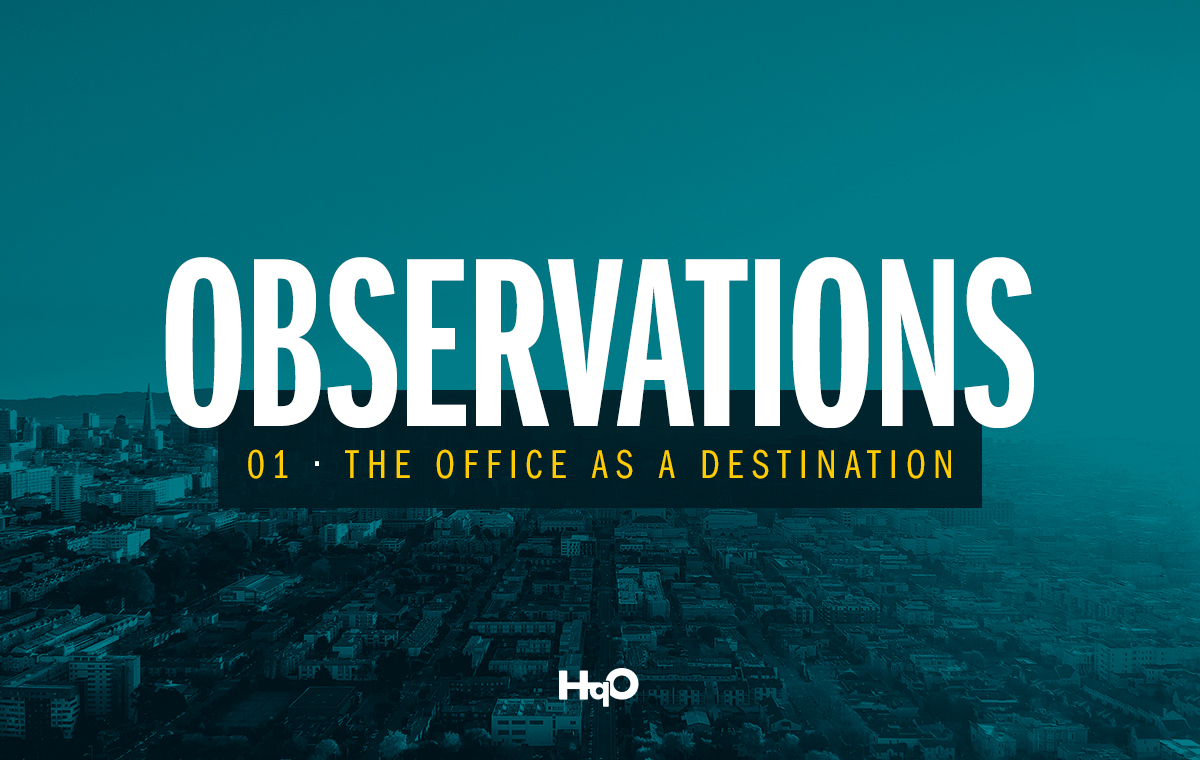The office is the highest and best form of engagement with and between tenant employees. It is the place where the labor force can have the greatest impact on creativity, innovation, and collaboration. But don’t take my word for it. Take it from one of the most dominant organizations in American business.
On April 27th, the National Football League issued a memo to all employees that they were expected to return to the office by the end of May for at least two or three days each week. This policy, the memo explained, was necessary to “fully re-establish the collaborative, creative, and connected environment that helps us foster continued success and drive progress against our league-wide goals.” The NFL’s motives for releasing this directive can be taken at face value. North America’s most successful sports enterprise does not own the Park Avenue building in which its headquarters offices are housed. Its organizational motivations are not based on the economics of filling their office space or profiting from increased footfall. Their motivation is a belief held in common with CRE owners and building managers worldwide. That is, that the office environment provides a superior setting for collaborative teamwork, an optimal platform for the development of increasingly innovative products and services, and a driver of better business results compared with a physically disconnected, remote workforce.
The NFL functions at the highest level on the field and in the boardroom and has long excelled at leveraging its human resources and financial capital to consistently operate as an apex competitor in the sports business marketplace. And it clearly sees the value in having its corporate team back in the building to achieve their most aggressive objectives.
The NFL, of course, is not alone in its efforts to re-introduce their employees to the office. An increasing number of employers have been preparing their teams to return to the office for at least part of each work week. But, according to an April 5th Fast Company article written by Gwen Moran, that doesn’t mean that their employees are as ready. Moran quoted a study by LiveCareer, an online job marketplace, that one-third of employees surveyed in January would resign before agreeing to return to work full-time. That concerning attitude may be shifting since the wider availability and efficacy of vaccines, but there is surely still a sense of reticence and anxiety about returning to a five-day office work week. To help re-establish the office as the highest and best platform for engagement with our tenants’ employees, it’s our mission to partner with tenants to reduce or eliminate that anxiety, and to reinvigorate the tenant-employee enthusiasm for choosing to work in our buildings more often than at home.
Moran also quotes Tami Simon, senior vice president of Segal — a company specializing in human resources and services — who identified the most important factor in encouraging employees to return to the office: “Above all else, employees need to feel safe: physically, mentally, and financially. Employers should transparently describe how they plan to make their workplace a safe place.” We can help, not only by offering a healthy and safe environment, but also by clearly communicating through employers and directly through our building apps, how we are meeting those important needs. Although our community of employers may differ in their level of focus on these issues, communicating that our building offers a consistent, safe, and vigilantly maintained environment in common areas and shared spaces can help to alleviate some of the anxiety employees may experience.
We must also recognize that the tenant-employees who work in our building are not the same people they were when COVID-19 forced them to become estranged from their offices. None of us are. We — and they — have experienced the conveniences and economy of the at-home experience. They have also enjoyed the flexibility of a self-directed work schedule and a closer level of coordination between their work and personal lives. Their reactions to requests for a return to the office will be as individual and as diverse as the tenant community itself. Beyond soothing the anxieties of returning with clearly communicated and an effectively delivered focus on health and safety, we will have to reflect thoughtfully on what new services and conveniences we must offer that will ensure the office returns to its position the highest and best form of engagement with our tenants. To achieve this, we will have to know what our tenants like about coming to the office, what they most dislike, what they fear missing out on while working at the office, and what they fear missing out on while they work from home. In the next Frank Talks CRE, we’ll explore these notions in the New Tenant Journey.
Frank Supovitz, an award-winning experience designer, producer, event organizer, and author, has played a leading role in the success of such world-class properties as the Super Bowl, the Indy 500, and the South Street Seaport in New York City. A respected global thought-leader in sports, entertainment, and facilities management, he brings more than three decades of expertise to the HqO Team as a senior consultant for Tenant Experience. Contact HqO to put our Tenant Experience team to work for you.



